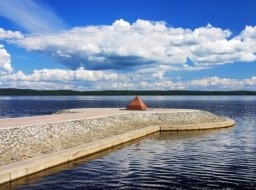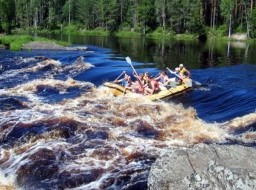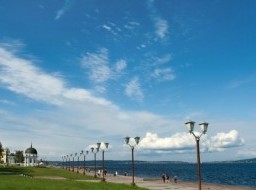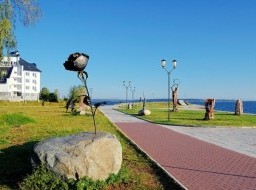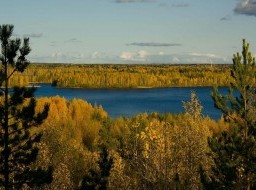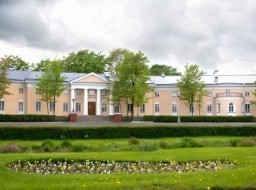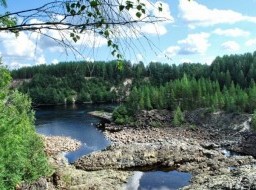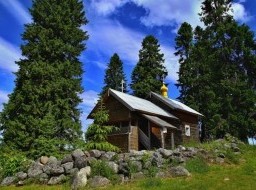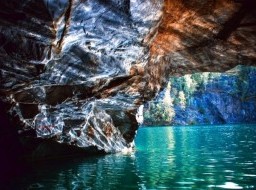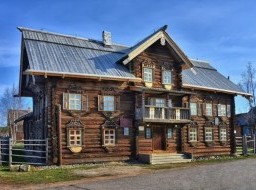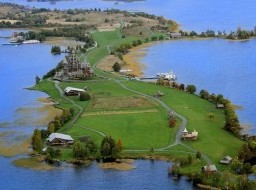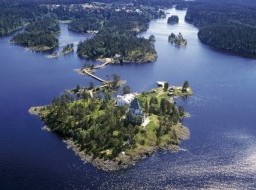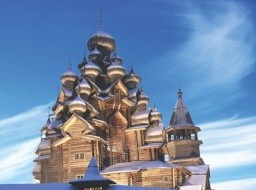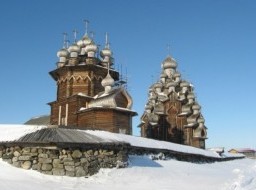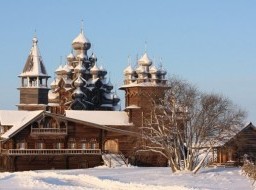This is a popular place with locals and visitors alike. Near to its entrance there is a collection of items connected with metallurgic activities in Karelia and products made at the Aleksandrovsky Factory. In the centre of the park there is a statue of Gavril Derzgin, a poet who was also the first governor of the city.
The Gubernatorsky Park is a monument of landscape architecture of the capital of Karelia. It is located next to the architectural ensemble of the Round Square (modern name - Lenin Square), in a block bounded by the streets of Engels, Gogol, Herzen and Zakamensky Lane. The park adjoins the former governor's house on Lenin Square, where the halls of the National Museum of the Republic of Karelia are located today. The Gubernatorsky Park is the "sum of two terms", the oldest private gardens in Petrozavodsk: the garden of the mountain governor, founded in the 18th century, and the governor's garden, which was established in the 1840s.
The mountain chief's garden was laid as a typical manor park. The Gubernatorsky Park was originally conceived as a landscape garden. The merger of the two gardens into one occurred after 1917. From the 1930s to the 1990s, this corner of Petrozavodsk was called the Park of Pioneers. In 2000, the park was named Governor. In 2003 the park was reconstructed under the guidance of the architects E. and S. Itzikson, V. Kuspak and the dendrologist A. Lantratova with the installation of a forged fence and gate. The oldest trees of Petrozavodsk - three larch at the age of about 200 years - are preserved in the park territory.
Near the entrance to the Gubernatorsky Park there is an "outdoor exhibition" dedicated to the history of industrial development in Petrozavodsk and Karelia. Among the items of the exposition are the mechanisms of the Alexander Plant of the 18th and early 20th centuries: a cast-iron wheel in 1788 with a trolley wheel pair, a supporting column, a cross and a T-bar of the foundry, a pinion of a drilling shop and three cannons rejected during the tests. Also here you can see a peasant cheese-making house for smelting pig iron from the village of Pokrovskoye and the arrow of a narrow-gauge road from the Tulmozersky plant. is a monument of landscape architecture of the capital of Karelia. It is located next to the architectural ensemble of the Round Square (modern name - Lenin Square), in a block bounded by the streets of Engels, Gogol, Herzen and Zakamensky Lane. The park adjoins the former governor's house on Lenin Square, where the halls of the National Museum of the Republic of Karelia are located today. The Gubernatorsky Park is the "sum of two terms", the oldest private gardens in Petrozavodsk: the garden of the mountain governor, founded in the 18th century, and the governor's garden, which was established in the 1840s.
The mountain chief's garden was laid as a typical manor park. The Gubernatorsky Park was originally conceived as a landscape garden. The merger of the two gardens into one occurred after 1917. From the 1930s to the 1990s, this corner of Petrozavodsk was called the Park of Pioneers. In 2000, the park was named Governor. In 2003 the park was reconstructed under the guidance of the architects E. and S. Itzikson, V. Kuspak and the dendrologist A. Lantratova with the installation of a forged fence and gate. The oldest trees of Petrozavodsk - three larch at the age of about 200 years - are preserved in the park territory.
Near the entrance to the Gubernatorsky Park there is an "outdoor exhibition" dedicated to the history of industrial development in Petrozavodsk and Karelia. Among the items of the exposition are the mechanisms of the Alexander Plant of the 18th and early 20th centuries: a cast-iron wheel in 1788 with a trolley wheel pair, a supporting column, a cross and a T-bar of the foundry, a pinion of a drilling shop and three cannons rejected during the tests. Also here you can see a peasant cheese-making house for smelting pig iron from the village of Pokrovskoye and the arrow of a narrow-gauge road from the Tulmozersky plant.

